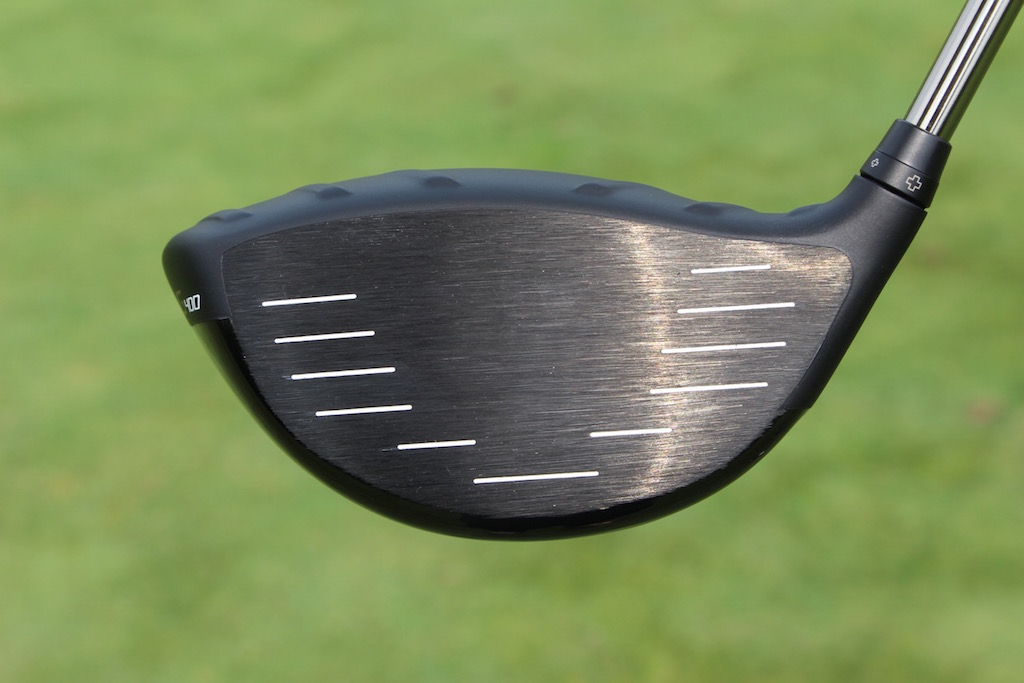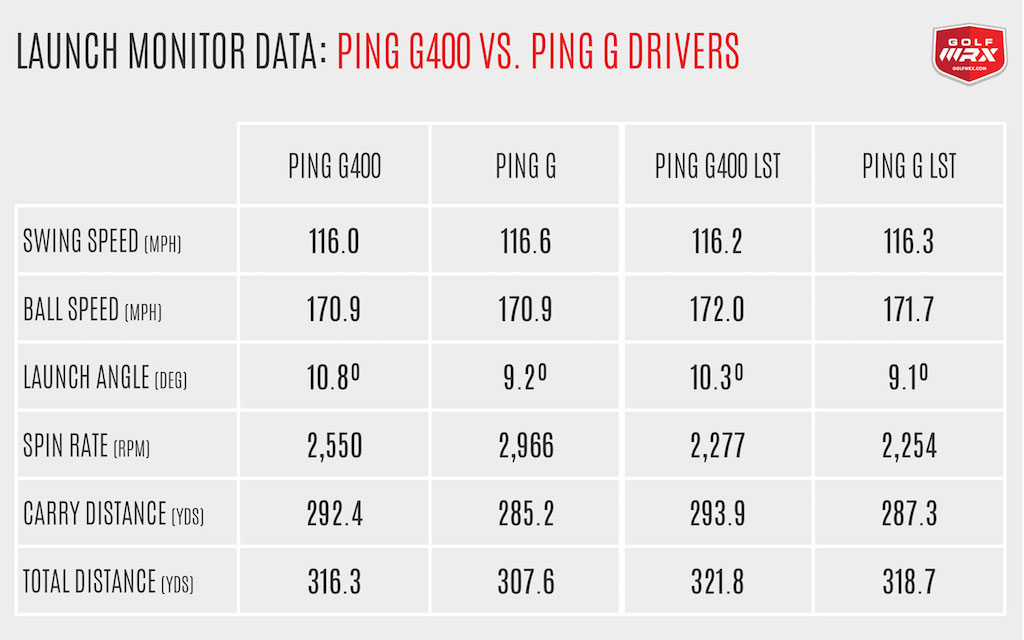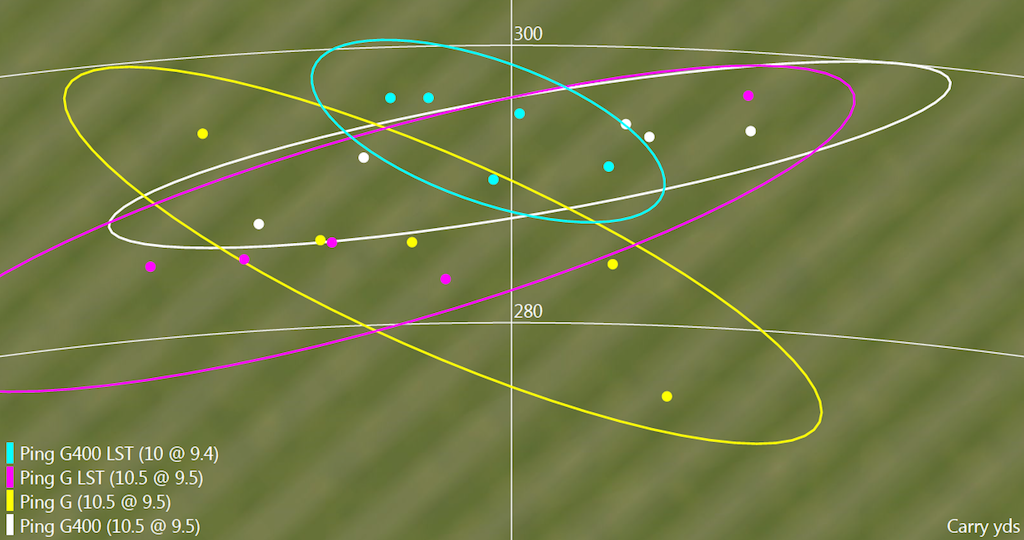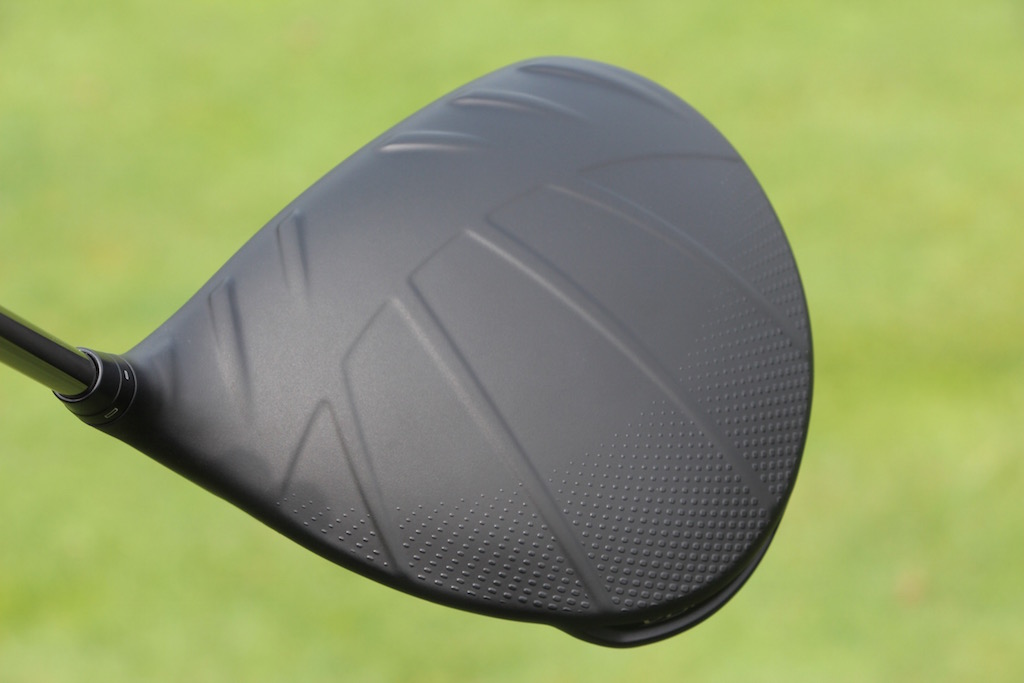Nike Dymo 2 Quad Keel 3 Wood Review
I still remember the start time I hit Ping's G30 driver. It was July 2014, and I was at Ping's HQ in Phoenix. Super low-spin drivers were all the rage at the fourth dimension. With their forward centre of gravity, they were helping golfers optimize their launch conditions beyond their wildest dreams: crazy high launch, ridiculously low spin. Many in the business, including myself, had one of these drivers and spent many launch monitor sessions trying to figure out how to get more distance from these high knuckleballs. The bad news was that forward-CG drivers, by nature, were actually unforgiving. Bad shots were really brusque and crooked.
Before I knew the G30 was a big deal, Marty Jertson, Ping'south Director of Product Development, explained to me his vision for the perfect driver within a conference room at Ping Headquarters. In his eyes, the perfect driver didn't have the low, forward center of gravity (CG) that was being touted at the time. Its CG was located as depression and as rearward in the driver caput every bit possible, which he said would offer the best of both worlds: optimized launch atmospheric condition on good shots, every bit well as the all-time possible forgiveness on bad shots.
Building the perfect driver was a long way off (and still is), but Jertson was excited where Ping had landed with the G30. When it was released, the driver was a powerful attestation to his vision. Its rear-CG design created keen altitude on skillful and bad shots, and information technology was likewise a very straight driver. The G30 sold incredibly well and, equally a result, the industry more often than not shifted away from frontwards-CG drivers.
It's been virtually iii years since the release of the G30, and Ping has but made another counterintuitive driver release. The company shrunk the size of its new G400 drivers in a climate where full-size drivers have become the norm. Granted, it's but 15 cubic centimeters smaller, but it'southward noticeable at address. Compared to the Ping M drivers they supersede (which replaced the G30), the G400'due south wait similar they cut carbs.
Despite their slimmer frames, however, the G400 drivers are actually more forgiving than the G drivers (which were even more forgiving than the G30). That's why Ping representatives say smaller is actually better in the G400's case. The drivers have the lowest, well-nigh rearward CG of any Ping drivers always, and their smaller size is said to improve their aerodynamics so golfers can swing them fractionally faster. The other large change is a new face material fabricated of T9S+ titanium, which is thinner and more flexible to aid golfers generate more brawl speed.

For this review, I wanted to put the G400 and G400 LST to the test confronting the Grand and the G LST drivers that they replace, then I took them to the Launch Pad at Carl'south Golfland in Bloomfield Hills, Mich. I striking five shots with each commuter on Trackman IV, and to ensure every bit much of an apples-to-apples comparison every bit possible, I tested each driver head with the aforementioned shaft. Each driver caput was adjusted to the same loft, or every bit close as possible.
Annotation: The Grand, G LST, and G400 drivers I tested were 10.5-degree heads adjusted to 9.5 degrees. The G400 LST had a loft of x degrees, and it was adjusted to 9.iv degrees.
The Test

In my personal driver tests, I don't usually encounter a huge uptick in distance or accuracy when comparison the latest drivers to the most recent models from the aforementioned manufacturer. Improvements by and large come in the course of improved head shaping, a improve feel, or enhanced adjustability. That'southward why I was surprised to see such a big change in my launch weather and dispersion with the G400 drivers.
G400 Examination Results: With the G400, I launched my drives an average of 1.half-dozen-degrees college than I did with the G while dropping spin an average of 416 rpm. That led to a significant improvement in distance. With my swing speed and brawl speed staying about the aforementioned, I added an boilerplate of 7.two yards more carry altitude and eight.seven yards more than total distance.
G400 LST Test Results: First, a notation about the G400 LST. Information technology has a CG that's slightly lower and more than forward than the standard G400 commuter to help golfers reduce spin. Similar the G30 LST and G LST, it'southward yet very much a rear-CG driver, but its pattern helps high-speed golfers who can consistently find the center of the club confront maximize altitude without highjacking forgiveness. When I test Ping drivers, the LST is generally the model that creates the best performance, and the G400 LST was no exception. I saw an average of a 1.2-caste higher launch angle with all other things staying most the same when I compared it to the G LST. The result was an boilerplate of half-dozen.6 yards more carry distance and 3.i yards more total distance. It was the longest and straightest driver I hit in the test.
Note: Ping also sells a G400 SFT (Straight Flight Engineering science) driver, which has added depict bias. To larn more than about information technology, click through to tech story on the G400, G400 LST and G400 SFT drivers.
Dispersion

One way to explain the improved launch weather condition is that I hit the G400 drivers more than consistently. As yous tin see in the Trackman dispersion chart, I hit the G400 and G400 LST drivers straighter on average than the G and Thousand LST. Is that its slightly enhanced forgiveness shining through? Perchance, perchance not.
To me, the changes Ping made to the look and experience of the driver were but as important every bit the functioning difference I saw on Trackman. I've ever preferred smaller commuter heads, or at least 460-cubic-centimeter drivers that appear smaller than their size. For that reason, I felt more confident with the G400 drivers in my easily. I didn't mind that I didn't see any added swing speed or brawl speed from the smaller driver caput. I was sold on the looks alone.
I besides preferred the sound of the G400 drivers to the G drivers. There was definitely much more of a "thwack" than a "ping" at bear upon, which made the G400'south feel more powerful. Looks and feel are subjective, of class, simply to me the comeback was night and solar day. I don't think it'southward a stretch to say that my fondness for the looks and feel of the G400 was at least a contributing factor to my improved performance in the test, if not the well-nigh important factor. When I like the way a guild wait at accost, I tend to hit it better, and I know I'g not alone.
I exercise want readers to proceed in mind that this was a one-person test and I hit a limited amount of balls. Yeah, it's a bully indication that the G400 commuter tin be measurably better than a G driver, just it'south non a guarantee.
I also desire to accost the weaknesses of the G400 drivers. While they're few, they could push golfers into another commuter model in a fitting. Unlike Callaway's GBB Epic, TaylorMade's M1 or Titleist's 917 drivers, the G400's don't have CG adaptability. That ways there's no manner to fine tune ball flight outside of a shaft or loft adjustment. A bigger bargain for some golfers might be the G400 crowns. Despite their smaller size, there'south still a lot to look at address, as was the case with the G drivers.

Aerodynamic features on the front of the crowns, "Turbulators," have been thickened for the G400 release. In that location's too Ping's "DragonFly Technology," a geometry on the back of the driver crowns that helps push CG lower and more rearward in the commuter heads. I personally recollect the G400 crowns requite the drivers an onetime-school, muscle machine-like look, but at that place'due south no question they won't wing with all golfers.
Whatsoever your thoughts well-nigh what's on top of the G400 drivers, there's no question that what'south under the hood can offer something the Thou and G30 drivers did not. Peradventure yous'll similar the smaller head. Possibly you'll prefer the quieter audio. Possibly the improved forgiveness will show up on a launch monitor or on the course. Or maybe you'll just flat out rip a G400 further and straighter downwards the heart similar I did.
If that last chip happens, try not to second-judge it.
Your Reaction?
- LIKE 668
- LEGIT 83
- WOW 47
- LOL 18
- IDHT 12
- Flop 22
- OB 15
- SHANK 58

Source: https://www.golfwrx.com/1162/the-big-review-nike-dymo-driver-and-fairway-woods/